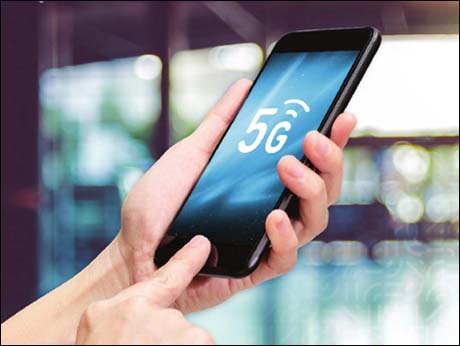
This year's Mobile World Congress provided a glimpse of new technologies that will fuel your smartphone in a 5G era.
Anand Parthasarathy
March 5 2018: Hype about 5G, the upcoming fifth generation of cellular networks, was in huge overdrive last week at the Mobile World Congress in Barcelona, Spain, the annual showcase of the mobile device business. And the fever pitch of preparedness has ensured that many of the technologies riding on 5G would begin trickling in even ahead of the formal launch in 2019-20.
Here is a roundup of tech trends from MWC that we can expect to touch and feel between now and 5G Day.
Finger print authentication
Phone makers seem to be homing on finger prints as the way to open the device. Scanners on the back of the phone are awkward. Vivo previewed its APEX concept smartphone, with the world's first half-screen fingerprint scanner embedded in the main display. It uses optics rather than capacitive technology so it will work only with phones with OLED or organic light emitting diode displays. The scan area is so large, you can place two fingers side by side to enhance security. And these could belong to different people. Indeed a highly secure phone could be opened by two persons, just as a bank locker today needs two keys.
A parallel development is seeing face recognition as a tool to open your phone. Korean player Suprema, which supplies its technology to many phone brands, showed "LookSign" the first 3-D face scan solution for handsets.RIP SIM card?
SIM cards are a pain for most mobile phone users. They hey come in multiple sizes: standard, micro, nano. Users often like to use two SIMs. But many phones give you a difficult choice: either 2 SIMS or one SIM plus one microSD card. What if you could dispense with SIMs altogether? Phone chip maker ARM unveiled an iSIM or integrated SIM -- this is actually a virtual SIM or SIMs built into chipset and occupies less than a square mm. Right now, it is being used in IoT applications -- like card swiping machines or devices to connect Radio Cabs. But inevitably it will come to mobile phones. You can soft-configure the iSIM to behave like an Airtel SIM or a Jio SIM or whatever. It requires all providers to come on board to wirelessly activate your SIMs . This is yet to happen.
Wireless charging.
Very soon, you can throw away those messy charging cables for phones. Most new handsets in 2018, will come with a technology called Qi, which will allow the phone to be charged wirelessly, by placing it on a Qi-compliant pad that is connected to the mains or has built-in power. Even if you current phone is not Qi-ready you can still buy a special Qi patch that you can paste on the back of the phone -- for around Rs 350. The wireless charging pad itself is available online for less than Rs 1000. The beauty is you can charge multiple phones
Augmented hearing
Earphones have become smart! They understand what you are hearing and react. The most dramatic application is on-the-fly translation. Use the smart earphones when you speak to a person whose language you don't understand. The device will live-translate the conversation and speak in your language . If the other guy also uses a smart earphone, it will work both ways. A great boon when you are holidaying in a foreign country. Google is the first to offer the feature in its Pixel Buds earphone which should reach India this year. They cost the equivalent of Rs 10,000 internationally -- and yes multiple Indian and international languages are supported.
For images of these five technologies see here